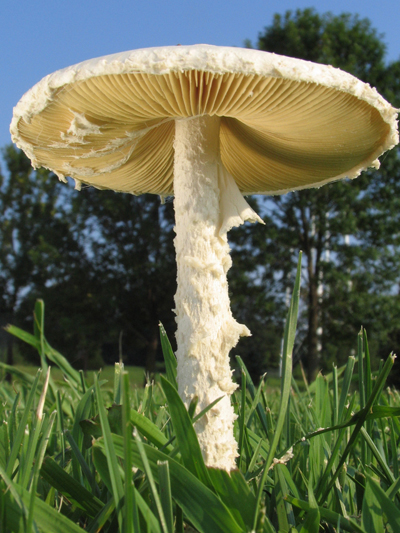Amanita thiersii is a white, sticky mushroom that obtains its carbon by decomposing grasses, playing a role in the terrestrial carbon cycle. The fungus is commonly found in grasslands throughout the central United States and grows in grassy areas away from trees, often seen on lawns after the rain.
By sequencing A. thiersii’s genome, researchers hope increase the list of fungi that might provide enzymes that can be used to commercialize the production of cellulosic biofuel, which falls in with the U.S. Department of Energy’s mission to develop clean energy, by potentially offering a more cost-effective method of breaking down lignocellulose in plant cell walls. Because the fungus is found in regions where the biomass is high in cellulose but low in lignin, some researchers think the A. thiersii genome might contain genes that can convert cellulose, though not lignin, to simple sugars. The genome sequence could also provide information on how A. thiersii adapts to the changing climate, especially as studies indicate the fungus is moving north and popping up in areas where it had not been seen previously.
Additionally, researchers hope the fungal genome will give more insight into the relationship between plant roots and soil fungi such as A. thiersii known as ectomycorrhizal symbiosis, where the fungi provide plants with soil nutrients in exchange for carbohydrates.
Principal Investigators: Anne Pringle, Harvard University
Program: CSP 2010
